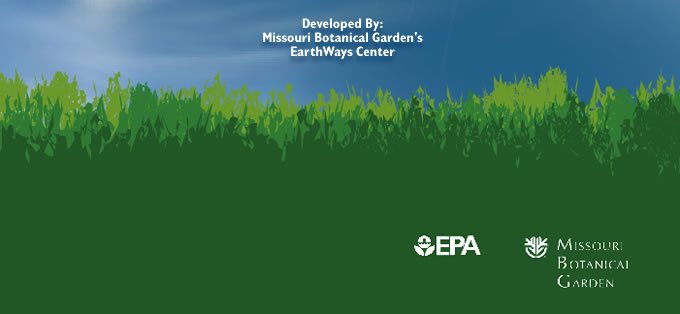 |
||||||
|
They're here! – download free educational materials for your classroom and community. Module Matrix/Details: |
Foreword
Most students will never be scientists or engineers. If we truly want the full spectrum of students and adults to gain greater understanding about air pollution and airborne toxics, using this knowledge to affect daily decisions, then we need to meet them in their non-science interest areas. In The Air: Tools for Learning About Airborne Toxics Across the Curriculum uses the multi-disciplinary breadth of education – reading and communication arts, mathematics, social studies, science, art, etc. – to explore how our individual and collective behaviors produce airborne toxics. The airborne toxics information used as the basis in the modules is from the perspective of the U.S. Environmental Protection Agency, the funder of this project. The origin of these materials came from the discovery that there was very little available to help people understand airborne toxics. Activities on acid rain or climate change were easily found, but not on airborne toxics. The St. Louis Community Air Project and the North Side (St. Louis) Clean Air Project were looking for ways to help their communities understand and manage airborne toxics. Educational material goals were to increase knowledge about air pollution (as it related to airborne toxics) and to make connections between behaviors and air quality. They had no access to appropriate materials. New materials had to:
A specialized science education is not needed to understand the concepts presented in these modules. Users will be able to understand and take specific actions to improve their air quality. We developed accessible and appropriate materials containing activities for all grade levels, formatted into the following modules: K-3, 3-6, 6-8, 9-12 and Adult. All materials have been correlated to National and Missouri education standards. The North American Association for Environmental Education’s Environmental Education Materials: Guidelines for Excellence were used to ensure the modules met the guidelines to be well-rounded environmental education materials. We established an extensive review process using four review panels: EPA science specialists, non-EPA science specialists, formal and non-formal educators, and community members. We greatly appreciate the 69 individuals who assisted in the review process. Visit www.intheair.org where you may download all materials for free as well as provide comments and suggestions for future additions. For more information about the modules you may also call 314-577-0220. Each module has: A) Teacher’s Guide with a Module Overview, Goals, and Correlations; B) Pre- and Post- Activities; C) Core Activity–the primary activity for the module; D) One to five Connecting Activities-activities that supplement the concepts in the Core Activity, but they also stand alone as individual activities; E) Appendix -background information on airborne toxics such as key terms, risk assessment information, and a brief history on clean air efforts in the U.S.; F) Further reading and research references; G) Evaluation form. Modules are coordinated so that all activities complement one another. The entire module may be implemented in the classroom as a unit, or you may choose to do just individual activities from one or more units as each group has different needs, interests and abilities. Our greatest appreciation goes to the writers of these materials, Margaret Lilly and Eleanor Hall. Their creativity, incredible writing abilities and excellent understanding of the educational needs of all ages along with their belief in educating in this topic is what enabled these modules to be the exceptional materials they are today. Thank you, Margaret and Ellie. Certainly a final thanks is due to those who choose to use In The Air: Tools for Learning About Airborne Toxics Across the Curriculum with their students. Without you, this excellent work goes nowhere. Each educator has the power to make a difference! Glenda Abney, Missouri Botanical Garden Dear Educators,Humans are increasingly altering Earth’s land, water, and atmosphere on local, regional, and global levels. We all need to understand that our actions do impact our living planet. In The Air: Tools for Learning About Airborne Toxics Across the Curriculum addresses how individual actions specifically alter the air, which in turn affects other aspects of our environment including the soil, the water, and all plants and animals. Coupled with this understanding, the lessons in In The Air provide tools to better manage behaviors that can be implemented where we live – in our local towns and cities and in our homes. I encourage you to utilize these excellent materials with the students and adults you work with. We’ve enjoyed working on this project with the fine staff at the U.S. EPA. With your help, the information and ideas in these materials will make a difference to people of all ages. Thank you for your efforts. What a great way to start making a positive and long lasting impact, educating others. Sincerely, Dear Educators,The U.S. Environmental Protection Agency (U.S. EPA) and its partners have developed a new set of educational materials. These educational materials will help us all improve our personal health and become better stewards of the environment. Healthier air, cleaner water, and better protected lands describe our mission. In The Air: Tools for Learning About Airborne Toxics Across the Curriculum will enable us all to be more deliberate in our choices and behaviors for improved personal health and a better environment. The decisions we make regarding products we use and how we use them make lasting impacts on air quality. The learning and behavior changes that will result after presenting the activities in these modules will make a positive and long-lasting difference in your students. We appreciate your interest in these exciting and effective materials. Without your help, these outstanding modules developed by the staff of Missouri Botanical Garden and U.S. EPA wouldn’t reach the intended audience. As an educator who uses these materials, you also are a critical part of this project. Thank you for using In The Air: Tools for Learning About Airborne Toxics Across the Curriculum. Sincerely, |
